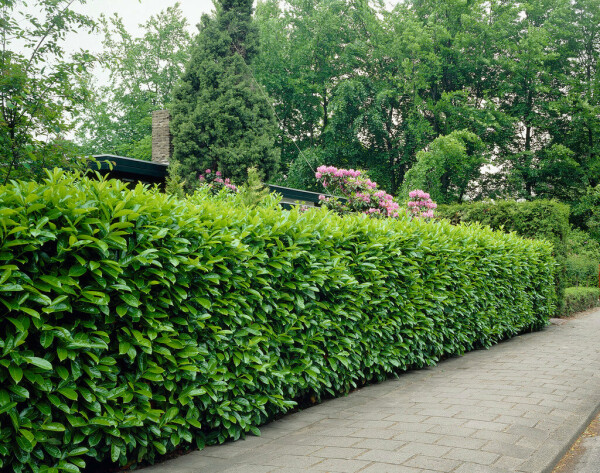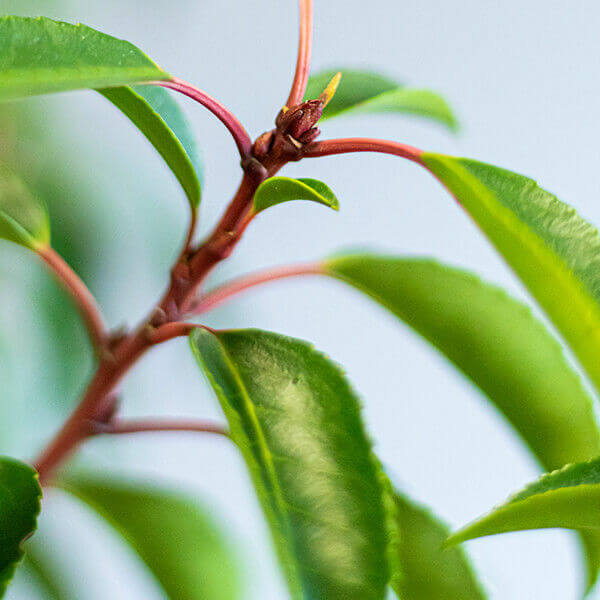Best Hedging Plants For Frosty Areas
Best Hedging Plants For Frosty Areas
Blog Article
Best Hedging Plants For Perimeter Hedges
Boost your garden's attraction with lush hedge ranges such as Yew (Taxus), Thuja, Laurel, Photinia, and Bamboo, commemorated for their structural integrity and ecological benefits.
Yew and Thuja supply evergreen coverage and winter season durability, while Laurel uses fast development and broad, aromatic leaves.
Photinia includes seasonal charm with its dynamic red foliage, and Bamboo lends a low-maintenance, peaceful atmosphere.
These hedges improve air quality, minimize sound, and produce tranquil, personal spaces.
Correct planting, spacing, and upkeep guarantee energetic development and ecological harmony.
Check out how these lush varieties can raise your garden's appeal and well-being.
Key Takeaways
Change Your Garden With Lush Hedge Ranges
- Select Yew for its thick, evergreen growth and exceptional durability.
- Opt for Laurel for its fast growth and broad leaves, guaranteeing fast personal privacy.
- Pick Photinia for its vibrant seasonal foliage, which turns a striking dark red.
- Utilize Bamboo for a low-maintenance, winter-hardy hedge with aesthetic appeal.
- Space plants 2-3 per meter and prune routinely for optimum development and health.
Popular Hedge Plants
When changing a garden with lush hedge ranges, it's vital to think about popular hedge plants such as Yew, Thuja, Laurel, and Photinia due to their special attributes and benefits.
Yew (Taxus) is extremely esteemed for its durability and dense, green development, making it a prime option for enduring landscapes.
Thuja is noted for its evergreen foliage and robust winter season strength.
Photinia includes seasonal vibrancy with red leaves that darken with time, developing vibrant visual appeal.
Laurel uses quick development and aromatic, broad leaves, perfect for fast privacy.
Furthermore, Bamboo is an exceptional option for ambiance, using a low-maintenance, winter-hardy alternative that improves the garden's aesthetic with its stylish, swaying canes.
These selections accommodate a variety of horticultural needs and preferences.
Benefits of Garden Hedges
Garden hedges offer a multitude of advantages, making them an important addition to any landscape. These natural barriers are economical to implement and supply substantial wind security, enhancing air blood circulation and adding to sound reduction. The thick foliage of hedges like Thuja and Beech guarantees privacy by blocking visibility, developing a peaceful and secluded environment.
Hedges likewise play an essential role in microclimate policy, providing a steady environment that fosters plant development and reduces temperature level changes. Their detailed leaf structures filter contaminants, enhancing air quality and contributing to a much healthier garden ecosystem.
Furthermore, hedges master noise decrease, absorbing and deflecting acoustic waves to lower ambient sound levels. This double functionality of providing both visual and acoustic personal privacy improves the overall harmony and aesthetic appeal of any garden.
Planting and Upkeep Tips
For a successful hedge, careful preparation of the planting area is crucial. Guarantee the soil has proper pH and drainage to support strong root development.
Space the plants properly for the picked species. Water the hedge frequently throughout its preliminary growth phase, changing as required with seasonal modifications.
Implement a methodical bug control and illness prevention technique, utilizing natural or chemical treatments when necessary. Routinely examine for aphids, termites, and fungal infections.
Apply mulch to maintain wetness and suppress weeds. Seasonal pruning promotes dense growth and air flow, vital for plant health.
Following these standards will assist you cultivate a lively, well-maintained hedge that enhances the charm of your garden.
Spacing and Trimming Guidelines
Spacing and Trimming Guidelines
Appropriate spacing and trimming are essential for cultivating healthy, aesthetically appealing hedges. Sufficient spacing guarantees each plant gets adequate nutrients, light, and airflow.
Follow these guidelines for optimal hedge maintenance:
- Spacing: Position hedge plants 2-3 plants per meter to encourage robust growth.
- Pruning Techniques: Routine pruning is essential for maintaining desired hedge height and shape. Trim new growth in summer season and cut down older wood throughout winter season.
- Seasonal Care: Adjust trimming methods and schedules according to seasonal requirements to make sure plant health.
- Hedge Height: Frequently display and trim to maintain the desired hedge height and attain consistent looks.
Adhering to these steps will ensure your hedge grows, improving both the appeal and functionality of your garden.
Selecting the Right Hedge
Selecting the Right Hedge
Choosing the suitable hedge involves assessing elements such as mature height, foliage density, and ecological durability. Effective hedge plant choice requires comprehending each types' growth attributes and site-specific versatility.
For example, Yew (Taxus) uses outstanding longevity and thick growth, while Thuja is significant for its winter strength. Furthermore, thinking about maintenance requirements is vital; fast-growing species like Laurel or Privet need regular trimming, whereas low-maintenance choices like Bamboo or Ivy may be more suitable for those seeking minimal maintenance.
Environmental aspects such as soil type, light availability, and wetness conditions should also assist the selection procedure. This mindful method makes sure the chosen hedges will prosper, supplying both aesthetic and practical advantages to the garden landscape.
Delivery and Planting Recommendations
To guarantee your hedge plants thrive, they must be provided by specialized couriers and planted quickly upon arrival.
Follow these necessary actions for successful planting:
- Soil Preparation: Enhance the soil with natural matter to enhance drain and nutrient content.
- Planting Depth: Produce a trench twice the width and equivalent to the depth of the root ball.
- Watering Strategies: Water thoroughly after planting, keeping the soil regularly wet however not saturated.
- Mulching: Apply a layer of mulch to keep wetness and reduce weeds.
Consumer Assistance and Service
Given the essential role of timely support in horticultural pursuits, our client assistance group is available six days a week through telephone, email, and social media to offer expert guidance and quickly attend to any issues. Their devotion to fast reaction times guarantees client fulfillment by dealing with questions connected to plant health, optimal planting methods, and maintenance schedules.

Interaction Method
Within 24 hours
Within 48 hours
This thorough support group, reinforced by a stellar 9.3/ 10 client score, highlights our dedication to boosting the gardening experience for every single customer.
Regularly Asked Questions
How Long Does It Take for Hedge Plants to Establish?
Hedge plants typically need one to three years to end up being fully established, with the precise period varying by species and growing conditions.
Efficient care during this crucial period is important for robust growth. Consistent watering, vigilant weed control, and appropriate fertilizer application are essential in promoting strong root advancement.
For instance, fast-growing types like Laurel may establish quicker, while slower-growing varieties such as Yew might take longer. Thorough upkeep speeds up the establishment process, resulting in healthy and thick hedges.
What Are the Best Hedge Plants for Privacy?
The question of the finest hedge plants for personal privacy involves evaluating evergreen and deciduous options.
Evergreen hedges like Thuja, Laurel, and Cypress supply year-round protection, guaranteeing continuous personal privacy.
On the other hand, deciduous hedges such as Beech offer seasonal personal privacy, shedding leaves in cooler months.
Key maintenance pointers for personal privacy hedges include routine trimming, fertilizing in spring, and proper spacing-- normally 2 to 3 plants per meter.
Furthermore, consistent watering and thorough weed removal are crucial for promoting healthy, thick growth.
Can Hedge Plants Bring In Wildlife to My Garden?
Yes, hedge plants can draw in wildlife to your garden by providing vital advantages like shelter, food, and nesting websites, consequently enhancing regional biodiversity. Yew, holly, and laurel are exceptional for drawing in birds, while ivy supports a range of bugs.
Nevertheless, it's essential to keep in mind that there are some drawbacks, such as increased upkeep to manage insects and routine upkeep. Thoroughly selecting and preserving hedge ranges can help stabilize these downsides and benefits, ultimately cultivating a sustainable and dynamic environment in your garden.
Are There Any Blooming Hedge Plants Available?
Yes, there are flowering hedge plants readily available that can enhance the charm of your garden.
For instance, Elaeagnus, also referred to as Olive Willow, produces aromatic white flowers in the fall, including a touch of elegance.
Photinia, another popular choice, showcases dynamic red leaves that grow into a rich green, producing a vibrant visual result throughout the seasons.
To make sure these plants thrive, it's necessary to practice correct pruning strategies and seasonal upkeep, such as trimming new growth in the summertime and cutting down in the winter season.
These procedures will assist keep the health and visual appeal of your flowering hedges.
How Do I Prevent Pests in My Hedge Plants?
To prevent pests in hedge plants, employ natural insect control techniques and preserve appropriate hedge care. Present useful pests like ladybugs, which victimize damaging bugs, to develop a well balanced environment.
Frequently examine your hedges for indications of invasion and immediately get rid of any afflicted parts to prevent the spread. Ensure the health of your hedges by applying balanced fertilizers and providing adequate water.
Make use of mulching to maintain soil wetness and appropriate spacing to decrease plant stress and promote robust growth. These practices jointly help in lessening insect issues and maintaining a healthy hedge.
Conclusion
In essence, choosing the ideal hedge ranges such read more as Yew, Thuja, and Laurel can transform any garden into a tranquil sanctuary. These plants supply year-round greenery, enhance visual appeal, and deal practical benefits like sound reduction and wind protection.
Correct planting methods, accurate spacing, constant watering, and seasonal cutting are important for optimum development.
Reputable delivery services and skilled client assistance guarantee a seamless experience from purchase to planting, making it easier than ever to elevate your outside space.
Garden hedges use a wide variety of benefits, making them an important addition to any landscape. These natural barriers are affordable to carry out and offer substantial wind security, boosting air flow and contributing to sound reduction. The thick foliage of hedges like Thuja and Beech guarantees personal privacy by obstructing presence, creating a peaceful and secluded environment.

Pruning Techniques: Routine pruning is necessary for keeping preferred hedge height and shape. Trim brand-new growth in summer and cut back older wood throughout winter season.
Report this page